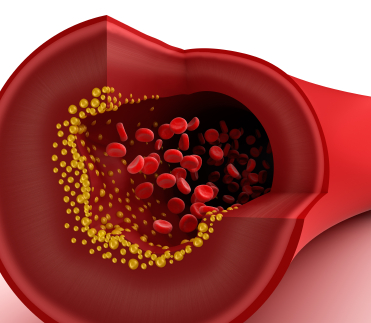Before I get into Part 2 of my switch from high fat / low carb to high carb / low fat, I want to go over a quick little tid bit about something that has been bothering me lately on the internet. There is this BIG push against mainstream medicine on the internet and in the blogosphere that cholesterol is not the “bad guy” when it comes to heart disease and that basically doctors are idiots and have it wrong and bloggers have it right. Let me explain why this is just semantics.
The argument goes like this:
Total Cholesterol and LDL Cholesterol aren’t nearly as good of a risk factor for heart disease as once thought, therefore cholesterol is not the problem.
Here is the problem: LDL Cholesterol is just a surrogate marker for the actual risk factor, which are apo B containing lipoproteins. Let me explain. Cholesterol cannot travel through the blood stream by itself so it attaches to these proteins called apolipoproteins to form what are called lipoproteins. It’s almost like cholesterol is the cargo and the apolipoprotein is the boat – together they make a cargo ship traveling through your arteries like a river. This is important to understand because it is an apolipoprotein (in particular, apolipoprotein B or apo B) and not the cholesterol that gets “stuck” in the inside of blood vessels and starts the atherosclerosis cascade. So you see it isn’t the cargo that is the problem, it is the ship that crashes into the sides of the river (the inner walls of your arteries) and causes damage. This is a super simplified version, but hopefully you get the gist. If you want a very technical version of this, checkout this detailed article.
Standard lipid panels look at cholesterol concentrations in the various lipoproteins (e.g. low density lipoproteins or LDL-C).This more or less gives an estimate of all of those aforementioned apo B particles, which I mentioned are a large part of atherosclerosis. However, this estimation CAN be off for various reasons, which I will touch on below. Either way, the LDL Cholesterol (which isn’t even directly measured in a lipid panel) does a decent job at estimating the risk and correlates with the amount of apo B and is why you see it listed as “bad cholesterol.” To even better estimate the apo B particles with a standard lipid panel, you can calculate what is called Non-HDL Cholesterol. High Density Lipoproteins contain apo A particles, which DO NOT cause atherosclerosis and are actually protective and anti-atherogenic. This is why HDL is called “good cholesterol.” So the thinking is that anything that isn’t HDL (apo A containing) cholesterol, is bad (atherogenic). With this you can calculate the Non-HDL by just subtracting HDL from Total Cholesterol. This gives you an even better estimation of the apo B containing particles.
With advanced lipid testing, you can actually measure the amount of apo B and/or the lipoprotein particle number. It isn’t an estimation like the standard lipid panel. This comes in handy because you can have what is called discordance between your LDL Cholesterol levels and your LDL Particle levels. Meaning that you could have a low LDL Cholesterol number and a high LDL Particle number (seen in insulin resistance), which means you falsely believe your risk of heart disease is low. You can also have a high LDL Cholesterol number and a low LDL Particle number, which means you falsely believe your risk of heart disease to be higher than it really is. So now if you get the advanced testing, you are looking at the true problem (apo B containing particles) and not the innocent bystander cholesterol (cholesterol is still involved in the process though). Here is a great article that goes over LDL Cholesterol and Particle discordance and why it matters.
So technically, CHOLESTEROL is NOT the enemy as once thought, but you COULD consider that apo B containing lipoproteins are. All in all this is just semantics. There are a host of other things that contribute to heart disease and atherosclerosis (e.g. inflammation and genetics) but I wanted to clear this up before I go on to my next post about my own labs in my n=1 experiment.
If you want to learn more about this particle test, checkout the official website. I will be going over my own results and changes in upcoming posts.

